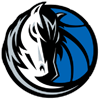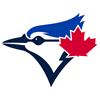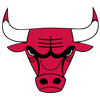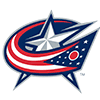If you became wary of investing any sort of draft capital in Giolito this spring, I certainly don't blame you. Among pitchers who qualified for the ERA title in 2018, Giolito ranked dead last with a 6.13 ERA. FIP also wasn't kind to him, as that number clocked in at 5.56 thanks to mediocre metrics across the board – 6.5 K/9, 4.7 BB/9, 1.4 HR/9. This year, after posting a QS in his first outing, a pair of clunkers elevated his ERA to 6.19 after three starts, as a 5.1 BB/9 echoed his past wildness. I can't imagine at that point that his ownership rate was too high, even in leagues deeper than 12-team mixed, but after allowing three runs over five innings May 2 against Boston, Giolito's next seven starts look like this:
7-0 W/L record
51.1 IP
5 ER
10 BB
59 K
1 HR
Some caution is advised, as five of those starts came against some of the bottom feeder offenses (TOR, CLE, KC), but it's still a remarkable run that has led to Giolito sitting at 9-1 with a 2.28 ERA on June 10. If you saw this coming, my congratulations go out to your wisdom, but I doubt many did. That of course leads to the next question: who is the next Lucas Giolito? We'll look at 10 possibilities this week, focusing on pitchers who haven't lived up to the hype, but who still have time to take that next step. Sure, most or even all of these guys aren't going to suddenly go 7-0 with a sub-1.00 ERA in their next seven starts, but in deeper leagues, perhaps they are worth a look.
Josh James, HOU
Despite not reaching the big leagues until age 25 a year ago, James has intrigued me for a couple years now as either a potential No. 2 starter or lights-out closer. His minor league ERA is a so-so 3.61, but in 114.1 innings between Double-A and Triple-A last year, James posted an elite 13.5 K/9 while sitting regularly in the upper 90s and touching as high as 102 mph with his fastball. He is said to have an above-average change, with a slider that could use some development. James posted a 3.9 BB/9 in the minors last year and is at 6.1 this season with the Astros, so clearly the control and command aren't there. That said, what if his slider develops, and his control and command improve to the point where they are at least average? Developing that third pitch would seem to be the key that gets James out of the bullpen and into the rotation, and while lots will have to go right for that to happen, his upside is worth dreaming on. Framber Valdez looked great in his first start as the Astros' No. 5 starter, but James could get a look down the road.
Dylan Bundy, BAL
The No. 4 overall pick way back in 2011, Bundy's career has been a massive disappointment considering his draft position. He's shown flashes of his upside, such as the first two months of last year (2.89 ERA), but the first two months of 2019 have yielded a 4.50 ERA and 5.17 FIP, as his fastball velocity has declined for the third straight season and the home runs continue to come in bunches (1.9 HR/9). Bundy's other ratios are fine, including a 9.0 K/9 and 3.1 BB/9, but he's allowing more flyballs than grounders again (0.95 G/F). On the plus side, Bundy's 13.3 percent swinging strike rate is well above the 11.1 percent league average, and it represents a career high. He's missing bats and not walking too many hitters, but yet again, when the command is off, MLB hitters are teeing off on his low-90s gas. A 27.1 percent hard hit rate is actually excellent, but he's countered that with a below average 34.2 GB percentage, and in Camden Yards, that leads to poor results, though his 1.5 HR/9 on the road isn't great either. There are some things to like there, and I do like that he's held LH hitters to a .236 BA after they stung him to the tune of .319 last season, but this looks like a guy in dire need of a change of scenery. Put him in a pitcher's park such as Petro Park or Oakland Coliseum, and I bet the results are much improved. Bundy is controllable for two more seasons after this year, so I can see some team rolling the dice at the deadline.
Jeff Hoffman, COL
A former No. 9 overall pick (2014), Hoffman has been a massive bust, coming from Toronto as the headliner in the Troy Tulowitzki trade. It's easy to wonder how his career would have turned out had he not made the move to Coors Field. With a 6.22 career ERA and 1.59 WHIP, Hoffman has bounced between Triple-A and the big leagues since 2016, but even in Triple-A he hasn't been good (4.85 ERA in 309.2 innings). This year, Hoffman has made five starts, and none of them have been of the quality variety, leading to an 8.06 ERA. On the positive side, Hoffman is doing something he hasn't done much of in the past and that is miss bats. His 10.2 K/9 is a huge leap from his pre-2019 mark of 7.0, and he's posted an excellent 2.5 BB/9. Like many pitchers these days it seems, Hoffman's issues have come in allowing way too many home runs – 2.1 HR/9 to be precise. To be successful in Coors Field, a pitcher needs to have a GB percentage far better than Hoffman's 33.8 percent, so that's something he'll need to work on. His 4.02 xFIP indicates the go-forward results should be much better, but if you're actually starting him any time soon, it had better be in a very, very deep NL-only league where the waiver wire options are few and far between. According to some reports, Hoffman reportedly tweaked his delivery this winter, and it has resulted in a full 1.0 mph bump in his fastball, but the bottom-line results just aren't there. Whether they will be at any point this year is an open question, though perhaps he'll finally figure things out.
Reynaldo Lopez, CHW
Could Giolito's teammate be the next Giolito? I certainly thought Lopez was in for a nice year in 2019, as he put together a 3.91 ERA over 32 starts last year and appeared poised for a breakout. I suppose however, that the warning signs were there, as last year's ratios weren't exactly spectacular – 7.2 K/9, 3.6 BB/9, 1.2 HR/9, and a 4.63 FIP. Lopez also had a below-average 33 GB percentage, and his 9.2 percent swinging strike rate was well below average. This year he's managed to bump that to 10.7 percent, which has pushed his K/9 to 8.6, but the rest of the data isn't pretty, including a 4.1 BB/9, 29.1 GB percentage, and a hard hit rate that has jumped from 33.7 to 39.1 percent. All that has led to a 6.21 ERA in 14 starts. Lopez has had some good starts, including six in which he allowed two or fewer runs, but another five in which he was charged with six or more earned. The home runs have been a killer (2.2 HR/9), so this looks to be a serious issue with locating his stuff. Lopez did toss six innings of one-run ball in his last start, but don't buy in just yet, as that one came against Kansas City. Still, he is just 25 and has shown flashes of No. 2 starter potential, so perhaps the consistency comes at some point.
Sandy Alcantara, MIA
Alcantara has had an okay season with a 3.80 ERA and 1.35 WHIP, but the underlying numbers are troubling, including a 5.8 K/9 and 4.1 BB/9. He does a good job keeping the ball on the ground with a 47.1 GB percentage, and that's led to a low (these days) 0.76 HR/9, which has helped keep the ball down. A predictor of future year ERA however, xFIP, shows Alcantara could be in trouble, as that mark sits at 5.14. On the plus side, he's had some dominant outings, including a complete-game two-hitter against the Mets, eight innings of shutout ball against Colorado, and in his last start, seven innings of one-run ball in Milwaukee. Other times though, he's been knocked around pretty good. Alcantara is a 23-year-old who can touch the mid-90s with ease, but his slider is a bit below average as is his curveball, though his change grades out as above-average and much-improved. If Alcantara can improve his slider while improving his command and control, the Marlins may actually salvage the Marcell Ozuna deal. Otherwise, he could find himself in the bullpen later this year with the upside of a high-leverage reliever.
Corbin Burnes, MIL
After a rocky first outing against the Dodgers in the NLCS last year, Burnes proceeded to allow just one baserunner over his final 4.2 innings while striking out six. I have to admit that watching him live biased me in spring drafts, as Burnes' move to the rotation didn't go well. Burnes put up a 10.70 ERA in four starts and eventually found himself in Triple-A before returning as a reliever. That hasn't exactly gone well either, as despite some solid outings, one seven-run effort has resulted in a 7.71 ERA out of the bullpen. All told, Burnes has a 9.50 ERA despite an elite 13.3 K/9 and a strong 94.9 mph average baseball. The BB/9 sits at an elevated 4.5, but it's the atmospheric 3.5 HR/9 that's destroyed his season. Burnes pitched exclusively out of the bullpen last year, managing a 2.61 ERA, 8.3 K/9, and 2.6 BB/9. Still, Burnes is just 24, so I'm not quite ready to give up on him as a starter despite the lack of success in that role. With the injuries the Brewers have had in the rotation and the uncertainty surrounding Jimmy Nelson, I can see Burnes getting another shot later this year.
Vince Velasquez, PHI
The appeal here is obvious. Velasquez throws in the mid-90s and he has a 9.8 career K/9. The downside is equally obvious, including this year's 4.9 BB/9 and 2.4 HR/9. Velasquez is currently without a rotation spot, though over his last 5.1 innings of relief, he's allowed just one run while striking out eight. The four walks in that span, however, highlight his downside. Velasquez's ability to handle a starter's workload is very much in question, as thought last year was a solid year for him, it was essentially ruined by an 8.45 ERA in his final eight starts. Velasquez is a fly ball pitcher in a hitter's park, so combined with the lack of control, the results are often ugly. My sense is that he's a setup man long term, but if something eventually clicks and he's able to repeat his delivery and locate his secondary stuff with above-average consistency, a breakout could be in the cards. I just wouldn't count on it.
Tyler Skaggs, LAA
Skaggs has always flashed the talent, but after missing all of 2015 due to Tommy John surgery, health has continued to elude him. Skaggs' 24 starts last year were a career-high, and it came with a decent 4.02 ERA, 9.3 K/9, and 2.9 BB/9. Skaggs has a 4.97 ERA in 11 starts this year with a 9.2 K/9 and 3.4 BB/9. He's averaging 91.2 mph with his fastball, which is down slightly from recent years, thought not remarkably so. Skaggs' FIPs the past two years are somewhat encouraging – 3.57 and 4.14, so perhaps if he can remain healthy, strong results will come in time. A big concern is a very low 31.7 GB percentage, a mark that compares quite unfavorably with his 43 percent career mark, so perhaps that number starts to improve more in line with the 43 percent. Skaggs' 9.2 percent swinging strike rate doesn't offer much encouragement, but I still hang my hat on the fact that he's a former first-round pick, he's left-handed and he's shown flashes. We'll just have to see if the consistency is there eventually.
Tyler Beede, SF
Ok, I don't blame you if you're thinking, "Really, this guy you choose to write about? He stinks." Yeah, he certainly does right now, but is there a bit of hope? Beede was the 14th overall pick in the 2014 draft, so right away, he has at least some credibility as a former top prospect. Unfortunately, after some success at the lower levels of the minors, Beede has a 4.38 ERA in 437.1 innings split between Double-A and Triple-A. That's not horrible, but that's come with an elevated 4.1 BB/9, and he's had zero success at the big league level with an 8.17 ERA and 2.21 WHIP across 25.1 innings. Beede though has seen his velocity return this year:
2018 MLB FBv: 92.3 mph
2019 MLB FBv: 94.6 mph
That's encouraging, and given that the Giants are going nowhere this year and have several rotation spots up for grabs, Beede should continue to get opportunities. Perhaps eventually something clicks.
Erick Fedde, WAS
At this point in his career, Fedde looks like a back-end of the rotation starter. In 11 starts last year, the 26-year-old posted a 5.54 ERA in 46:22 K:BB in 50.1 innings. He also posted a 4.41 ERA in Triple-A, though we have to give him some credit for an excellent 70:18 K:BB in 67.1 innings. This year, Fedde has pitched to a 2.93 ERA in 30.1 innings, though a 20:11 K:BB is hardly encouraging. He's also seen his fastball velocity drop from, on average, 93.7 mph to 92.5 mph year over year. On the plus side, a 51.7 GB percentage is excellent, though the lack of dominance as indicated by his 5.9 K/9 and 8.2 percent swinging strike rate are both troubling. Maybe the former first-round pick never puts it all together, but what if?








































